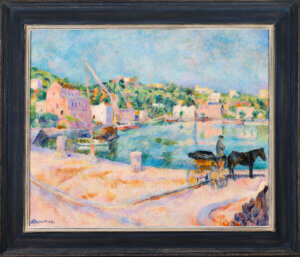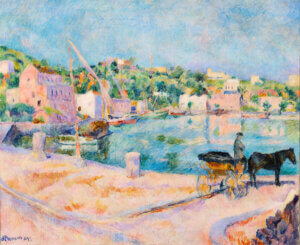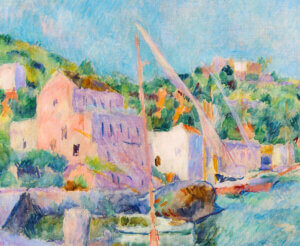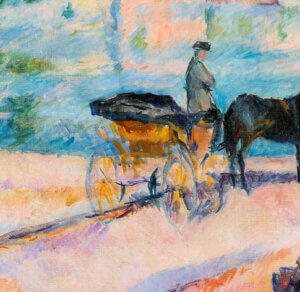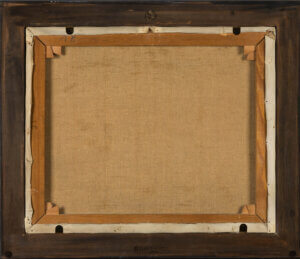Eugen Hamm’s artistic activity began with humorous drawings for the magazine Simplicissimus and the magazine Jugend in Berlin.
From 1904, he took lessons at Lovis Corinth’s private painting school. The artist lived in Berlin most of the time in 1907 and 1909/10, where he also had his first exhibition at the Secession. In 1909, Hamm also traveled to Paris and studied there at the Académie Matisse under its famous namesake. This institution was not only a training center, but also a forum for artists who found artistic inspiration in Henry Matisse in particular.
In Paris, he also became part of the circle of German painters at the Café du Dôme in Montparnasse, “The Domiers”. Painters such as Rudolf Levy, Albert Weisgerber, Hans Purrmann and Henry Bing were already an integral part of the scene.
From 1910 onwards, Eugen Hamm moved the center of his life to Leipzig. He was only back in Paris between 1911 and 1913, where he maintained contact with the Café du Dôme. In Leipzig, he was a member of the Deutscher Künstlerbund, the Leipziger Künstlerverein and the Reichsverband Bildender Künstler Deutschland. After the First World War, following brief stays in Italy and Munich, he returned to Leipzig, where he worked as a portraitist for the Neue Leipziger Zeitung and in the circle of Leipzig Expressionists in the field of printmaking. His best-known work from this period is the portfolio “Vorstadt Bordell”, which he created together with Joachim Ringelnatz (1883-1934).
In 1925 he was a member of the jury for the 10th Leipzig Annual Exhibition.
In 1928 he moved to Berlin, where he chose to commit suicide in Berlin-Schöneberg in 1930. Just twelve days later, a poem by Erich Kästner (1899-1974) on Hamm’s death entitled “Nekrolog für den Maler E. H“ appeared in issue 29/1930 of the Weltbühne.
In 1937, three of his works were confiscated from the Museum of Fine Arts in Leipzig and destroyed.
Today, many of his paintings hang in renowned museums such as the Galerie Neue Meister in Dresden, the Museum der bildenden Künste Leipzig and the Lindenau Museum in Altenburg.
Exhibitions:
1907, 1910-12 Secession, Berlin
1913 Commeter Gallery, Hamburg
1914 Free Secession, Berlin
1914 Alfred Flechtheim Gallery, Düsseldorf
1920 Museum of Fine Arts, Leipzig
